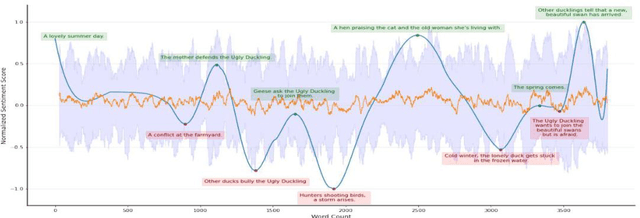Get our free extension to see links to code for papers anywhere online!Free add-on: code for papers everywhere!Free add-on: See code for papers anywhere!
Telma Peura
Sentiment Dynamics of Success: Fractal Scaling of Story Arcs Predicts Reader Preferences
Dec 14, 2021Figures and Tables:







Abstract:We explore the correlation between the sentiment arcs of H. C. Andersen's fairy tales and their popularity, measured as their average score on the platform GoodReads. Specifically, we do not conceive a story's overall sentimental trend as predictive \textit{per se}, but we focus on its coherence and predictability over time as represented by the arc's Hurst exponent. We find that degrading Hurst values tend to imply degrading quality scores, while a Hurst exponent between .55 and .65 might indicate a "sweet spot" for literary appreciation.
Via
 Add to Chrome
Add to Chrome Add to Firefox
Add to Firefox Add to Edge
Add to Edge